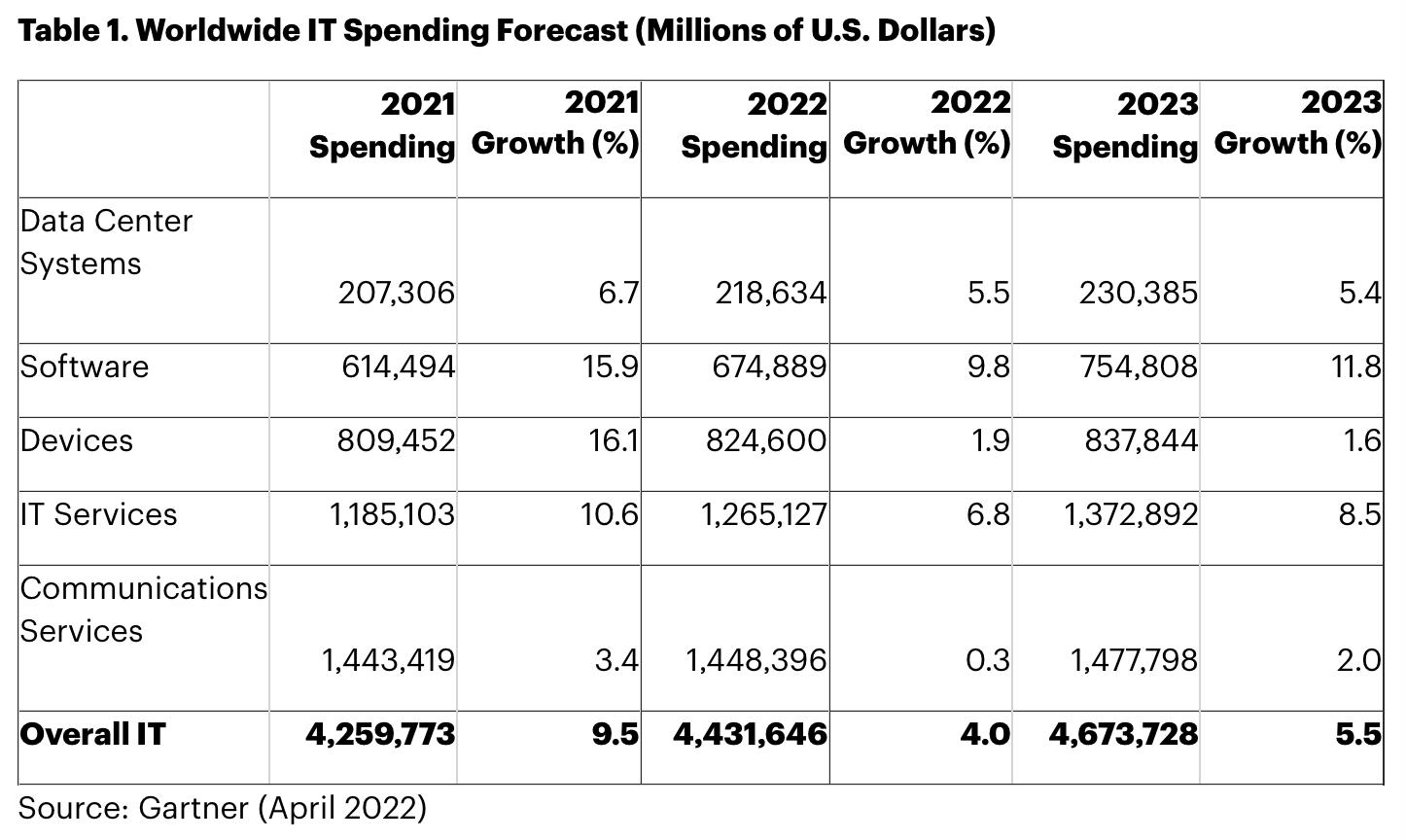IT Spending: Further increase in 2022
Worldwide IT spending is projected to increase by 4% from 2021, according to the latest forecast by Gartner, Inc. “Governments will continue to invest heavily in digital technologies. This includes investing in improving the customer and employee experience, strengthening analytical capabilities, and increasing operational agility.
Even though we are witnessing inflation, the Ukraine war, high gas + electricity prices, geopolitical disturbances, and currency fluctuations, none of this is being a reason for companies to cut back their IT spending. On the contrary, the Gartner market research institute is even assuming a renewed increase. It is expected that $4.4 trillion will be spent on IT globally in 2022, which would represent a growth of 4.4% year on year.

The corona pandemic has shown us that it is important to show a high degree of flexibility, especially in turbulent times. The rapid transition of jobs to the home office would not have been feasible at all without a solid investment in IT. The market researchers from Gartner assume that companies acknowledge that the way forward is by investing in tech, and therefore will invest additional available funds in their IT. Another HR survey from Gartner reveals that 41% of employees are likely to work remotely at least some of the time post covid pandemic.
Even if the investments run through all IT areas, Gartner assumes that software solutions ($675 billion, up 9.8% from 2021; ) and IT services (at $1.27 billion, up by almost 7%) are the two fastest-growing categories that will account for the largest share in 2022.
Another trend can be observed in 2022, when it comes to allocating the budget for IT, more companies are focusing on modernizing existing systems than looking toward new developments. Modernization in the IT area can be understood, for example, when legacy systems and traditional processes are shifted to a modern IT operating model. As aging legacy systems can be costly and slow the pace of change, organizations are implementing technologies that include lean processes and automation, which helps them improve workload placement, and eliminate unused or underused systems. Not renewing existing core applications, but modernizing them, not only represents a financial advantage for the company, it also has a positive effect on the environmental balance.
